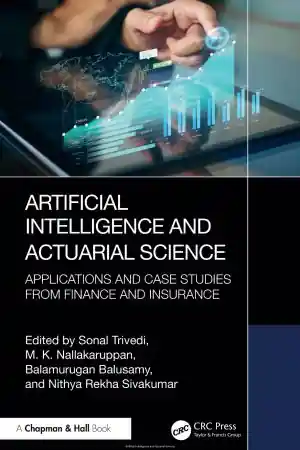
R: Predictive Analysis
- Length: 1581 pages
- Edition: 1
- Language: English
- Publisher: Packt Publishing
- Publication Date: 2017-03-31
- ISBN-10: B0713SJV6X
- Sales Rank: #3146863 (See Top 100 Books)
Master the art of predictive modeling
About This Book
- Load, wrangle, and analyze your data using the world’s most powerful statistical programming language
- Familiarize yourself with the most common data mining tools of R, such as k-means, hierarchical regression, linear regression, Naive Bayes, decision trees, text mining and so on.
- We emphasize important concepts, such as the bias-variance trade-off and over-fitting, which are pervasive in predictive modeling
Who This Book Is For
If you work with data and want to become an expert in predictive analysis and modeling, then this Learning Path will serve you well. It is intended for budding and seasoned practitioners of predictive modeling alike. You should have basic knowledge of the use of R, although it’s not necessary to put this Learning Path to great use.
What You Will Learn
- Get to know the basics of R’s syntax and major data structures
- Write functions, load data, and install packages
- Use different data sources in R and know how to interface with databases, and request and load JSON and XML
- Identify the challenges and apply your knowledge about data analysis in R to imperfect real-world data
- Predict the future with reasonably simple algorithms
- Understand key data visualization and predictive analytic skills using R
- Understand the language of models and the predictive modeling process
In Detail
Predictive analytics is a field that uses data to build models that predict a future outcome of interest. It can be applied to a range of business strategies and has been a key player in search advertising and recommendation engines.
The power and domain-specificity of R allows the user to express complex analytics easily, quickly, and succinctly. R offers a free and open source environment that is perfect for both learning and deploying predictive modeling solutions in the real world. This Learning Path will provide you with all the steps you need to master the art of predictive modeling with R.
We start with an introduction to data analysis with R, and then gradually you’ll get your feet wet with predictive modeling. You will get to grips with the fundamentals of applied statistics and build on this knowledge to perform sophisticated and powerful analytics. You will be able to solve the difficulties relating to performing data analysis in practice and find solutions to working with “messy data”, large data, communicating results, and facilitating reproducibility. You will then perform key predictive analytics tasks using R, such as train and test predictive models for classification and regression tasks, score new data sets and so on. By the end of this Learning Path, you will have explored and tested the most popular modeling techniques in use on real-world data sets and mastered a diverse range of techniques in predictive analytics.
This Learning Path combines some of the best that Packt has to offer in one complete, curated package. It includes content from the following Packt products:
- Data Analysis with R, Tony Fischetti
- Learning Predictive Analytics with R, Eric Mayor
- Mastering Predictive Analytics with R, Rui Miguel Forte
Style and approach
Learn data analysis using engaging examples and fun exercises, and with a gentle and friendly but comprehensive “learn-by-doing” approach. This is a practical course, which analyzes compelling data about life, health, and death with the help of tutorials. It offers you a useful way of interpreting the data that’s specific to this course, but that can also be applied to any other data. This course is designed to be both a guide and a reference for moving beyond the basics of predictive modeling.
Table of Contents
1. Module 1
1. RefresheR
2. The Shape of Data
3. Describing Relationships
4. Probability
5. Using Data to Reason About the World
6. Testing Hypotheses
7. Bayesian Methods
8. Predicting Continuous Variables
9. Predicting Categorical Variables
10. Sources of Data
11. Dealing with Messy Data
12. Dealing with Large Data
13. Reproducibility and Best Practices
2. Module 2
1. Visualizing and Manipulating Data Using R
2. Data Visualization with Lattice
3. Cluster Analysis
4. Agglomerative Clustering Using hclust()
5. Dimensionality Reduction with Principal Component Analysis
6. Exploring Association Rules with Apriori
7. Probability Distributions, Covariance, and Correlation
8. Linear Regression
9. Classification with k-Nearest Neighbors and Na?ve Bayes
10. Classification Trees
12. Multilevel Analyses
13. Text Analytics with R
14. Cross-validation and Bootstrapping Using Caret and Exporting Predictive Models Using PMML
3. Module 3
1. Gearing Up for Predictive Modeling
2. Linear Regression
3. Logistic Regression
4. Neural Networks
5. Support Vector Machines
6. Tree-based Methods
7. Ensemble Methods
8. Probabilistic Graphical Models
9. Time Series Analysis
10. Topic Modeling
11. Recommendation Systems







